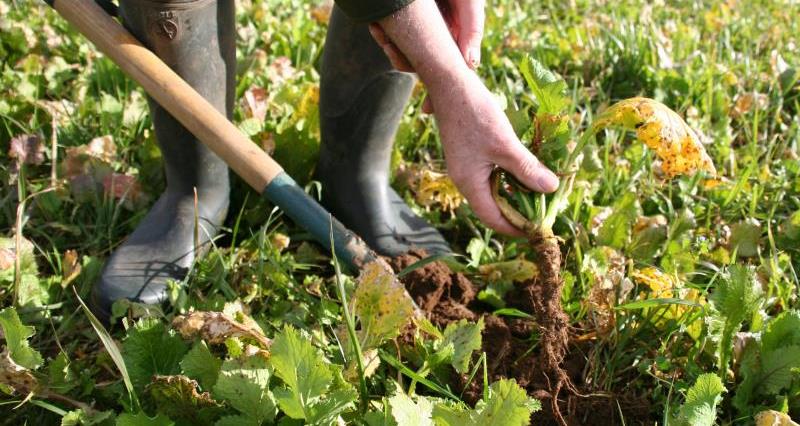What
Brassica crops grown for feeding livestock in situ through the winter can attract large numbers of seed-eating birds.
Why
- Lack of winter seed food is the main cause of declines of many seed-eating birds on UK farmland. The weeds that grow within fodder crops benefit insects and provide a valuable source of seed food for wildlife.
- These crops can also provide cover for wildlife through the winter. Tolerating some broadleaved weeds in brassica fodder crops such as swede, turnips, fodder rape or kale will provide seed food for birds.
- It is possible to grow a good fodder crop for livestock with minimal weed control.
How
- Avoid growing fodder crops in fields prone to soil erosion. Establish the crop using good agricultural practice. Maintain a wide grass buffer strip alongside any watercourses.
- If possible, establish without weed control. Brassica and root crops are good competitors with weeds once established, and moderate weed levels later in the year have little effect on yield.
- If possible, only use post-emergence weed control. Alternatively, if comprehensive weed control is required, consider leaving small strips or corners of the cultivated field unsprayed (or even unsown) to provide sacrificial weedy areas.
- Avoid crops established by spraying off grassland with a broad-spectrum herbicide and direct drilling into the desiccated sward, as this generally allows few beneficial weeds to establish.
- Strip grazing the field opens up fresh ground regularly through the winter for birds to forage for seeds.
- To avoid the risk of soil erosion, use strip grazing down the slope, limit periods of access and provide runback areas for stock.
- Maintain the stubble until mid-February
